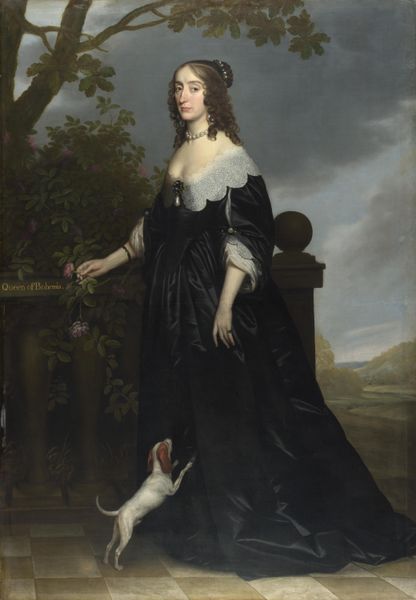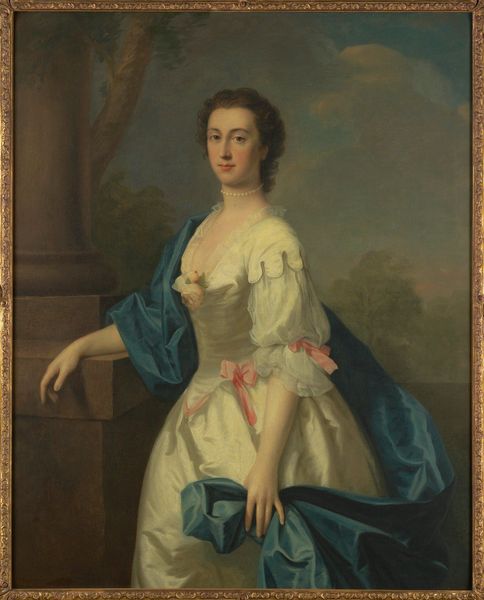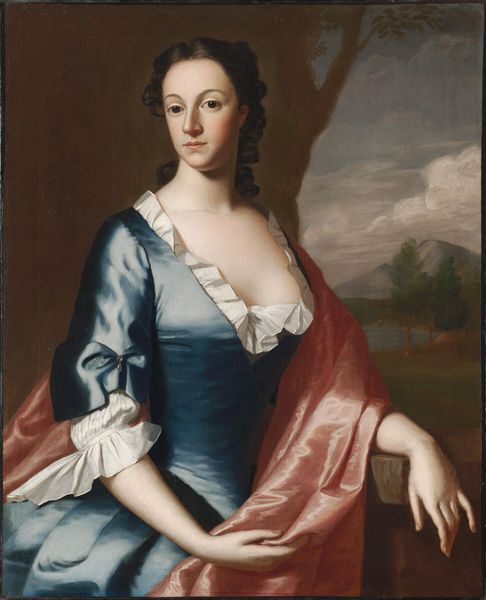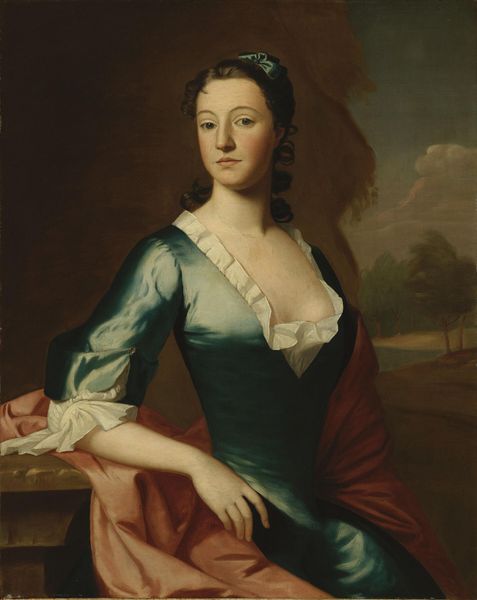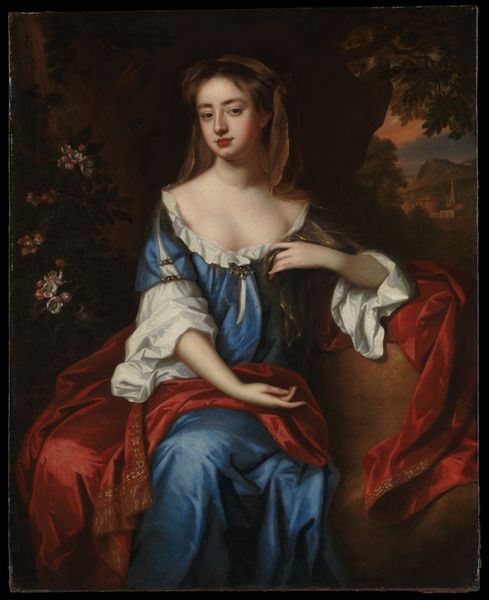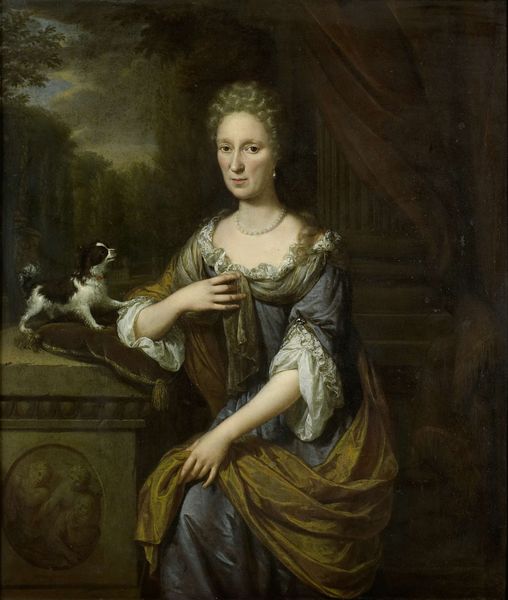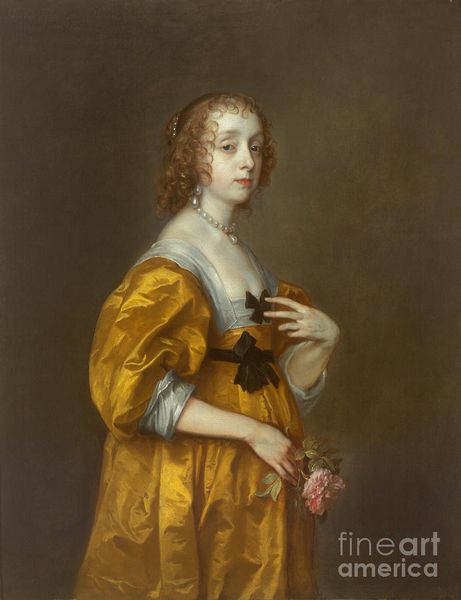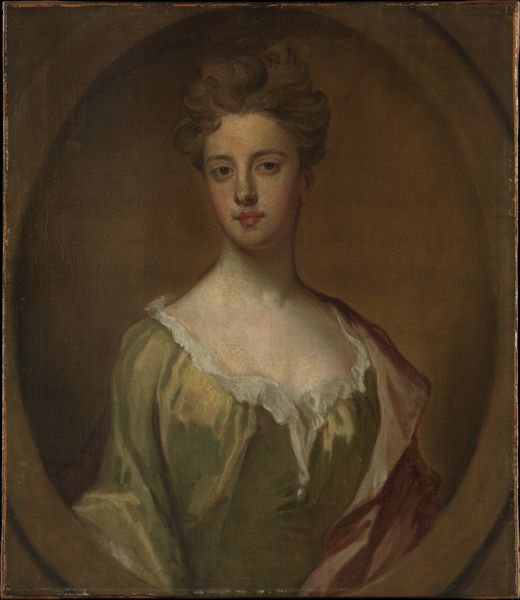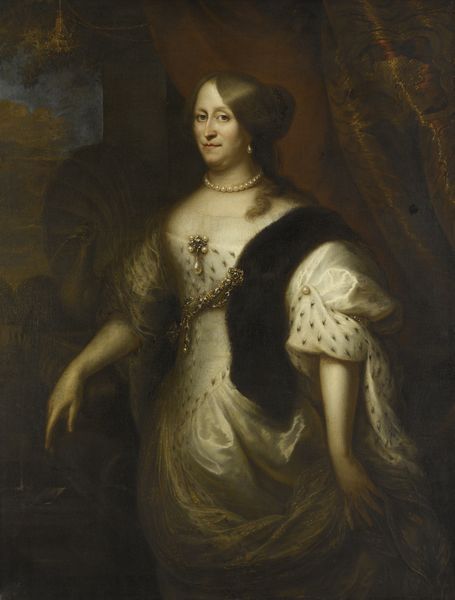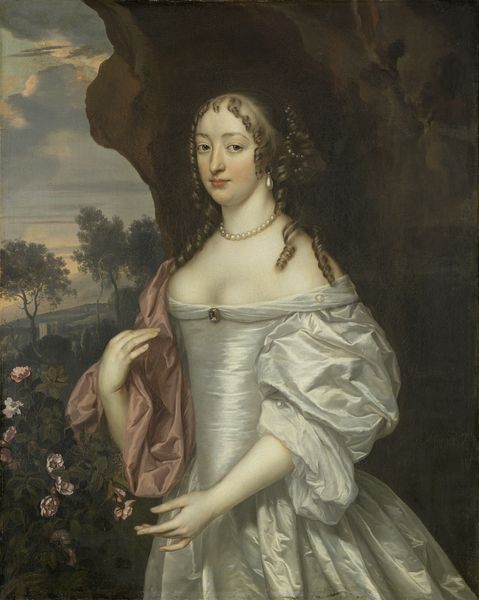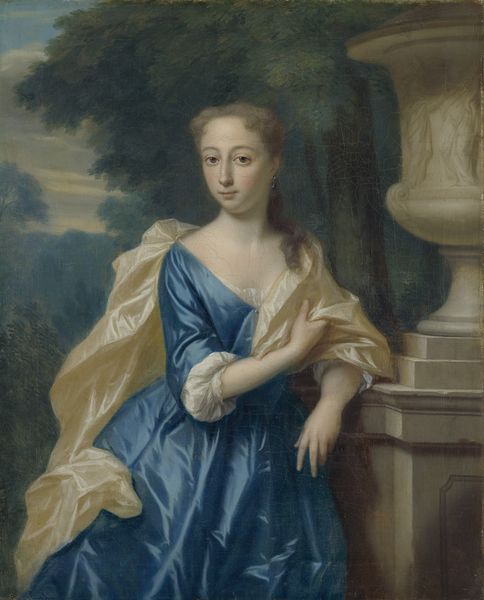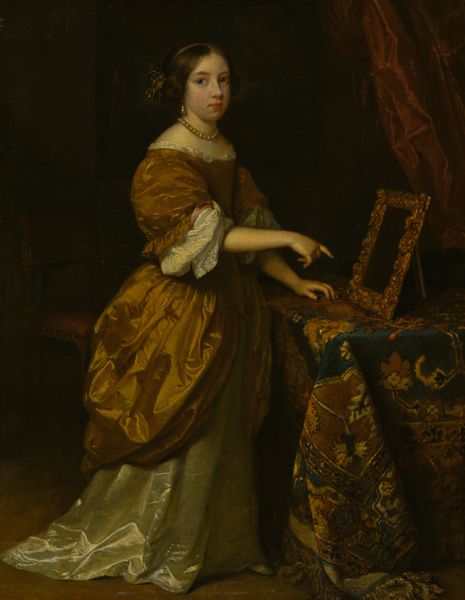
painting, oil-paint
#
portrait
#
baroque
#
painting
#
oil-paint
#
landscape
#
cityscape
#
genre-painting
Dimensions: 77 1/4 x 51 3/4 in. (196.2 x 131.4 cm)
Copyright: Public Domain
Curator: The artwork before us is titled "Portrait of a Woman" created sometime between 1696 and 1743 by Michael Dahl, currently residing here at The Metropolitan Museum of Art. It is an oil on canvas. Editor: My initial response is that the tonality strikes me as somewhat melancholic, yet there is a carefully structured elegance to the sitter's pose, draped fabric, and architectural framing elements. The light, though soft, highlights key compositional aspects, creating a sense of classical balance. Curator: Indeed. Dahl's work participates in a larger conversation surrounding portraiture in the Baroque era. The rise of a wealthy merchant class necessitated new ways to express social standing. This is where portraiture served as propaganda, broadcasting power and privilege to a wide audience. Editor: Precisely, the texture of the oil paint and its blending gives the dress a sheen quality that feels deliberate. How does the interplay between the fabric and the sitter affect the visual harmony, and potentially even the narrative embedded in the canvas? I notice there is some tension from the heavy folds of her headscarf versus the thin folds of her frilly, white shirt, which offers some interest that breaks through the more obvious features of status. Curator: Those visual contrasts between fabrics would also carry social connotations in this period, offering yet another layer of significance, indicating wealth but also cultural sensitivity and an artistic patronage on behalf of the sitter, and even Michael Dahl, in that time. She appears enlightened, elevated in position, literally, by her higher placement upon this elevated terrace looking out over a classical style city- or estatescape, or whatever lies in the distance of this background, which could also signify international commerce routes available to this elevated person. Editor: This is a convincing read, looking at the details we can trace the influence and legacy of Baroque ideals around both the social class and historical symbolism depicted here, and there are certainly social connotations embedded into even what might appear a simple oil painting. Curator: It has certainly afforded us insights beyond just aesthetics alone.
Comments
No comments
Be the first to comment and join the conversation on the ultimate creative platform.
